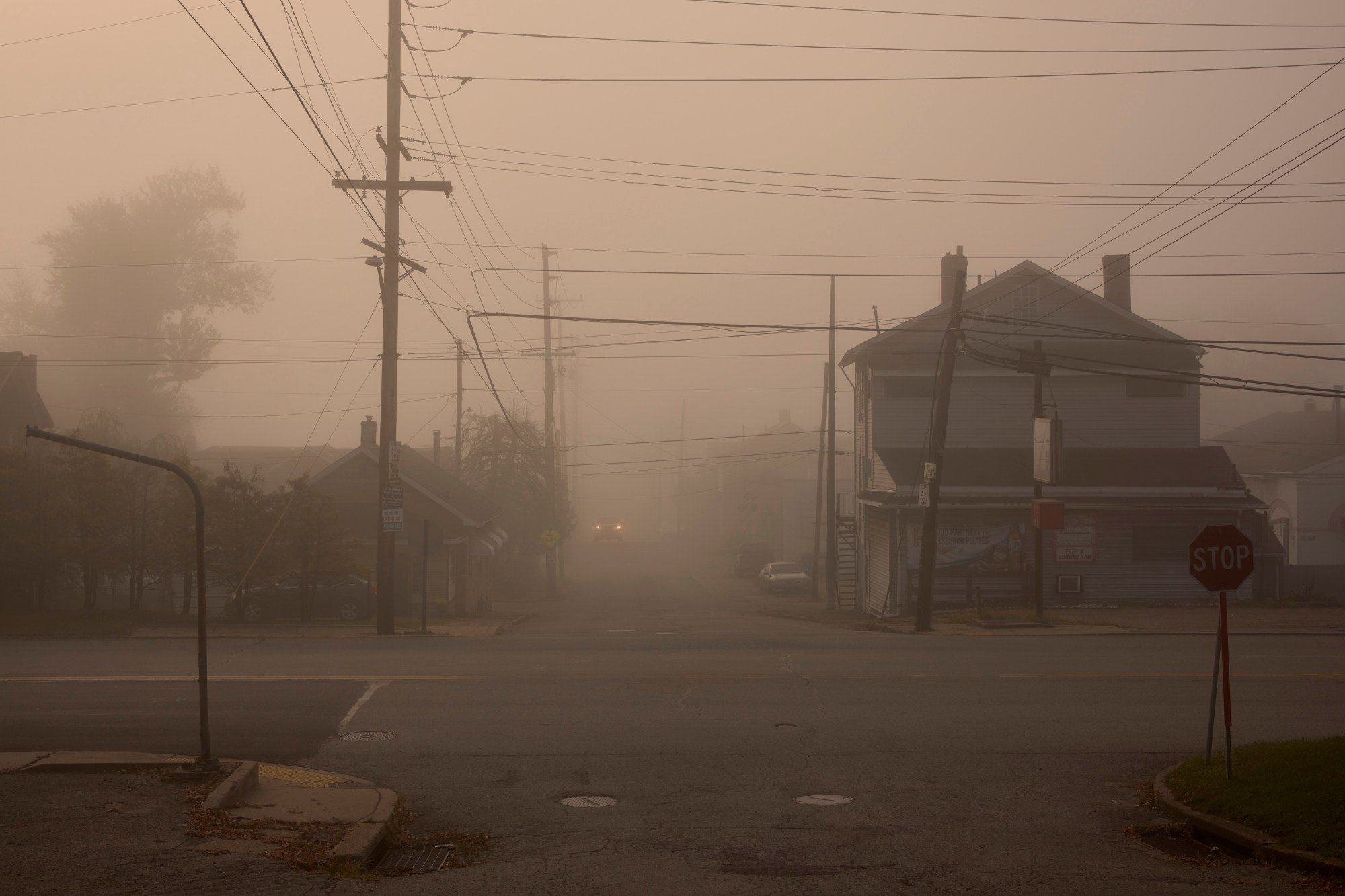Copyright ProPublica

For decades, noxious, cancer-causing gases poured from some of the nation’s largest industrial polluters, seeping invisibly from cracks in antiquated pipes or billowing out of smokestacks in plumes that choked the communities nearby. And for decades, the Environmental Protection Agency tracked those emissions not by monitoring the air but by relying on a kind of honor system. Companies were allowed to estimate their chemical pollution using methods that even the EPA conceded were often unreliable. In 2023, the EPA received irrefutable proof that these estimates were highly flawed. The agency had required 20 industrial facilities to temporarily install air monitors around their perimeters — known as fence-line monitoring — to see how bad the pollution actually was. The results, compiled now for the first time by ProPublica, were shocking. In virtually every case, the actual emissions were higher — often much higher — than the estimates, ProPublica found. At one steel industry plant near Pittsburgh, a potent carcinogen was found at levels more than 30 times higher than estimated. In Louisiana, a chemical facility recorded levels of another toxic chemical that were 156 times higher. Despite industry opposition, the EPA took action last year. More than 130 industrial facilities would have to install permanent air monitors, starting as soon as this year. Communities surrounding some of the country’s most notorious polluters would finally get a glimpse of what they were breathing. The monitors would act as a warning system: If pollution levels were to exceed new standards set by the EPA, the facility would have to find the source of the leaks and fix them. In fact, among the 20 plants that were forced to conduct temporary monitoring, half would have violated these standards, ProPublica found. Then, shortly after President Donald Trump’s inauguration, his administration announced it was putting a halt to the effort. Not only was Trump’s EPA going to reconsider the new requirements — the first step in rolling them back — but companies in the meantime could apply for two-year exemptions allowing them to evade the rules altogether. In a matter of weeks, regulations that took years to enact had been sidestepped in favor of keeping the status quo. The implications are far-reaching. More than 5 million people face an increased risk of developing cancer because they live near the type of plants that would have been subject to the new emission rules, according to the EPA. That number is almost certainly an undercount because it’s based on the companies’ flawed estimates of their emissions. The White House referred ProPublica to the EPA, which responded to a detailed summary of our findings with an email from its press office acknowledging a “discrepancy” between the self-reported emissions and air monitoring data. “However, we have not determined the cause of the discrepancy. We will explore this as part of the reconsideration” of the rules, the email said. For environmentalists and some of the millions living near these polluters, Trump’s reversals have been a gut punch. “It just doesn’t make sense,” said Haley Lewis, senior attorney at the Environmental Integrity Project, an advocacy group founded by a former EPA enforcement official. If the EPA chooses to abandon fence-line monitoring, then it’s leaving “meaningful, affordable and achievable” emissions cuts on the table, Lewis said. The only reason to do that is “they don’t want their true emissions to be known.” “The More We Learned, The More Afraid We Were” Coal piles up like black sand dunes outside Clairton Coke Works just south of Pittsburgh. The largest coke-making facility in the Western Hemisphere, its ovens have been operating since 1916. Heat from the 2,000-degree ovens bake raw coal into coke, a carbon-rich material essential to converting iron ore and limestone into steel. Benzene, an invisible gas linked to blood cancers and anemia, streams out of the plant alongside specks of particulate matter and stinking sulfur compounds. Other chemicals escape from tiny openings, seams and oven doors that don’t close tightly. The hilly terrain of the Monongahela River valley forms the perfect trap for air pollution. During temperature inversions, when cold air gets stuck beneath a layer of warm air, residents walk around in a cloud of stagnant pollution. Miriam Maletta, who runs a hair salon in Clairton, wonders if the prosperity U.S. Steel brought to town was worth the health toll. Despite its decline, the iconic company continues to employ more than 3,000 workers in the region and remains a source of local pride. Maletta’s brother James worked as a driver for U.S. Steel in the 1970s, she recalled; when he blew his nose after work, his snot was black with soot. Their father died from gastric cancer in 2009 after more than 20 years of working for the coke plant. Maletta, 62, was diagnosed with lymphoma in 2016 and is now in remission, she said. Some limited data suggests a link between air pollution and the two cancers, though it’s virtually impossible to prove that exposure to chemicals caused a specific person’s illness. Her mother has chronic obstructive pulmonary disease, which is more commonly associated with smoking but is also linked to air pollution. Maletta said her mother never smoked. In the last seven years, local records show, the county health department has levied fines against U.S. Steel of more than $10 million for allegedly violating federal, state and county air pollution regulations. The company often appeals the cases, settling them for smaller amounts. The dangers of the plant were underscored for residents when the coke facility caught fire in 2018, choking the valley with toxic gases. Emergency room visits for asthma spiked. Long after the company fixed the equipment that caused the fire, Cindy Meckel, 66, said she struggled to climb the stairs while bringing in the groceries at her home more than a mile from the plant. Her husband David, 77, would nearly pass out swinging a sledgehammer. Their eyes burned after a 30-minute walk with their rottweiler, Nixon. After Cindy was diagnosed with anemia, she wondered if benzene emissions had played a role. The iron supplements she took as treatment wreaked havoc on her stomach. “The more we knew, the more we learned, the more afraid we were,” Cindy said. She and David provided depositions to support a lawsuit that two environmental groups filed against U.S. Steel in 2019. The lawsuit said local residents had experienced headaches, fatigue and difficulty breathing, symptoms they believe were caused by excess emissions of dangerous pollutants released after the fire. U.S. Steel disputed the accusations in court filings, saying it “lacks knowledge or information sufficient to form a belief” about the cause of the alleged health effects. The company eventually settled the lawsuit; U.S. Steel agreed to pay nearly $20 million to upgrade the facility and another $5 million for local clean air programs. The Meckels and Maletta joined a grassroots organization called Valley Clean Air Now, which advocated for the region’s cluster of industrial towns, including Clairton. They distributed indoor air filters and urged a crackdown on U.S. Steel at public meetings. A critical question remained: How much pollution was pouring from the Clairton Coke Works? Industrial companies are required to report their emissions to the EPA, but it’s not an easy task. Facility staff can take direct measurements of pollutants by sticking a scientific instrument inside a smokestack for several hours, for example. But a sprawling plant like Clairton’s has miles of pipelines and up to thousands of components like valves and fittings that could leak toxic gases. Trying to measure every potential leak would be enormously difficult. So the EPA allows facilities to provide estimates using numbers called emission factors. Each emission factor estimates the leaks produced by a specific industrial process, such as the amount of benzene expected to be released from a “light-oil storage tank” at a coke manufacturing plant. The EPA began compiling emission factors decades ago to help determine large-scale air pollution trends. As individual facilities started using them to estimate their emissions, the potential for errors grew. Emission factors are often based on a limited number of measurements taken in the field or in the lab. They assume that the same process always leaks at roughly the same rate, even though some are highly variable. It would be like insisting that every bundt cake should take an hour to bake, though baking times vary depending on the ingredients and the oven temperature. Over the years, numerous studies and reports from government watchdogs, including the EPA’s Office of Inspector General, have criticized the use of emission factors and recommended changes. The EPA itself has recognized since at least 1990 that emission factors are problematic. Records show that it considers many of the coke oven emission factors “poor” or “below average” in terms of accuracy. The EPA takes a facility’s estimated emissions and plugs the numbers into air modeling software to calculate the level of toxic chemicals leaking into the surrounding community. The software models how plumes of chemicals from different parts of a plant disperse across the property, given wind patterns and other factors. In 2023, as the EPA weighed stricter regulations for coke plants, the agency took the Clairton benzene estimates and put them into the modeling program. The results appeared reassuring: They predicted that the maximum benzene level near the fence line was higher than what’s typically found in outdoor air but represented a low cancer risk and was well under the concentration that regulators recommend to avoid other health problems. But when the EPA required Clairton to install temporary air monitors at its perimeter, there was a stark difference. “Oh Good, It’s Working” Fence-line monitoring has proven a powerful tool in reducing pollution. A decade ago under President Barack Obama, the EPA tightened requirements for oil refineries, insisting facilities install benzene monitoring equipment around their perimeters and curtail emissions when levels exceed a certain standard. Monitors revealed that refineries had often been releasing more benzene than they had estimated in reports to the government. One refinery in New Mexico measured annual average benzene that was more than 100 times the level the EPA model had predicted based on its prior reports. Soon, benzene levels near refineries began to plummet. The amount around the New Mexico refinery fell dramatically in four years; by 2022, it complied with EPA’s refinery benzene standard. After President Joe Biden took office, the EPA proposed similar air monitors for other industrial facilities. The Clairton facility was one of five coke plants required to set up fence-line monitors for six months. All five showed higher levels of benzene than the EPA had calculated using the facilities’ estimates. The Clairton monitors showed that the actual benzene levels at its fence line were 37 times higher than estimated. Air Monitors at Coke Plants Showed Benzene Levels Much Higher Than Estimated U.S. Steel vehemently opposed the EPA’s proposal to require permanent fence-line monitors for coke plants, arguing that the benzene standard was too stringent. Five Democratic senators, including both from Pennsylvania, told the EPA last year that the new requirements would cost too much and “pose a threat to our steel industry’s global economic competitiveness while yielding minimal environmental benefits.” The EPA estimates that fence-line monitoring would cost coke plants about $107,000 per year. (U.S. Steel had $1.4 billion in cash at the end of 2024, financial records show.) The true costs, however, would be far greater because the company would likely have to invest heavily to patch up innumerable leaks identified with the help of the monitors. ProPublica provided U.S. Steel with a detailed summary of our findings. “U. S. Steel is committed to working with the EPA and supports regulations that are well-grounded in law; and are based on sound science, available and proven technology, and that consider costs and other non-air quality impacts. Unfortunately, the 2024 coke rules do not meet these criteria, and we are evaluating next steps,” Andrew Fulton, a company spokesperson, said in an email. The “EPA remains open to revising the 2024 rule and we look forward to joining industry partners in continuing discussions with the agency.” In addition to the five coke manufacturers, the EPA required temporary fence-line monitors at 11 large chemical plants and four iron and steel mills. The pattern was the same. The monitoring at the 20 facilities yielded 37 sets of fence-line data that could be compared against the results derived from their self-reported emissions. In all but one of those cases, or 97% of the time, the monitoring revealed the facilities had underestimated their emissions. That included a Dow Chemical facility in Plaquemine, Louisiana, where levels of vinyl chloride, a dangerous carcinogen, were in reality 156 times higher than the EPA calculated based on the plant’s estimates. Concentrations of ethylene dichloride, another carcinogen, around the facility were a whopping 1,033 times higher. Ten of the plants were leaking dangerous chemicals at higher volumes than the EPA’s new rules would have allowed. Around one Indorama chemical manufacturing plant in Port Neches, Texas, monitors showed that concentrations of ethylene oxide, a potent carcinogen, would be seven times the standard set by the EPA. And for a Formosa plastics plant in Point Comfort, Texas, ethylene dichloride levels exceeded the EPA standard and were actually 69 times higher than had been expected based on its self-reported estimates. Ethylene Oxide Emissions Higher Than Chemical Plants Had Estimated, Monitors Show “Dow will continue working closely with regulatory authorities to protect the safety of our employees and surrounding communities,” Glynna Mayers, a spokesperson for Dow, which also owns Union Carbide, said in an email. “We remain committed to operating reliably and advancing efforts to reduce emissions below their already safe levels.” Indorama didn’t respond to a request for comment. A Formosa spokesperson said the company conducts air monitoring in the neighborhood near the facility and shares the results with Texas regulators. Formosa has also taken steps to reduce emissions of ethylene dichloride over the last decade, the spokesperson said. Companies that owned the other facilities did not respond to requests for comment. Experts say the industrial plants most likely to underestimate their emissions are the ones with extensive networks of pipelines, valves, compressors, pumps and storage tanks. It’s nearly impossible to project emissions from so many dispersed sources, said Cary Secrest, a former EPA employee who spent 20 years inspecting industrial plants and now works at a company that measures pollution. “I don’t think that companies are deliberately trying to underestimate emissions,” Secrest said. “I just think that it’s impossible without actual measurements.” While there’s no comprehensive list of these types of facilities, chemical manufacturers and coke plants are vulnerable to pervasive leaks — especially if they’re badly maintained, he said. Instead of allowing polluters to rely on emission factors that are little better than a “fantasy,” he said, the agency should require more direct monitoring — even if those techniques are more expensive. David Meckel spoke up at a public hearing in 2023 and told EPA officials that Clairton Coke Works had ruined his health. He could no longer cut his grass without resting to catch his breath, he said. “I stagger around like a fish out of water.” The EPA’s final coke plants rule, released in May 2024 under Biden, required the facilities to conduct fence-line monitoring and keep their annual average benzene emissions below a certain level. Because benzene is often leaking alongside other pollutants, curbing benzene would also reduce overall emissions, the EPA explained. For the Meckels, it felt like a victory. “It did sort of make you feel energized,” Cindy said, as if they could finally breathe and say, “‘Oh good, it’s working.’” “It’s Hurting the People” In addition to promising a new era of accountability for coke manufacturers, two new rules adopted by the EPA last year would have required more than 120 larger chemical plants, as well as a handful of steel and iron mills, to install air monitors and limit their emissions. The communities at highest risk, like those in Louisiana’s Cancer Alley, would have benefited the most. The Dow Chemical plant that underestimated its emissions is part of a cluster of industrial facilities near the city of Plaquemine, Louisiana. The combined emissions from local polluters create a lifetime cancer risk of 100 in a million for rural residents nearby, according to the latest EPA risk map from 2020. That figure, which means that 100 people out of a million would be expected to develop cancer after a lifetime of exposure, is at the very limit of what the EPA considers acceptable — though many public health experts say that threshold is too lenient. That risk number is also likely an underestimate, since it was calculated from self-reported emissions data. About 90,000 people living near larger chemical plants face an unacceptable risk of developing cancer, the EPA said. The agency estimated that the new limits on chemicals would have cut that number to 3,000 residents — a drop of 97%. In March, on what the Trump administration touted as the “the greatest and most consequential day of deregulation in the history of the United States,” the EPA announced it would reconsider or roll back 31 environmental regulations and programs, including the three with fence-line monitoring requirements. That marked the start of a lengthy process that could erase or water down the rules. Meanwhile, the president has so far given two-year exemptions from the regulations to some 50 chemical plants, including the Louisiana Dow facility and the Indorama and Formosa facilities in Texas. (Environmentalists recently sued the administration over these exemptions. The EPA press office said the agency doesn’t comment on current or pending litigation; the White House didn’t respond to a request for comment.) Mayers, the Dow spokesperson, said the extensions for complying with the rule “are appropriate and necessary to address technical challenges and maintain the safe, efficient operation of our facilities.” U.S. Steel applied for an exemption for its Clairton plant; Fulton, the company spokesperson, said a decision on the application is pending. In its application, which ProPublica obtained via a public records request, the company said the fence-line monitoring requirement was too stringent. The application stated that finding and fixing the root cause of excess leaks would be costly and complex given the “many miles of piping and thousands of valves and flanges at a coke facility.” The loss of the promised monitoring has left some in its neighboring communities disillusioned. One resident wondered what was the point of talking to reporters and regulators if nothing was going to change. Another local, Qiyam Ansari, who is also executive director of Valley Clean Air Now, said he and other residents have to look for solutions outside the federal government. The organization is working with public health researchers at the University of Pittsburgh to conduct a local health survey in hopes that the results might inspire stricter local regulations. The work is deeply personal to the 29-year-old Ansari. He nearly died from an asthma attack as a teenager after his family moved close to a local U.S. Steel mill. He still lives nearby; every room in his house has an air purifier. Even his cat Kiki has asthma, he said, and she didn’t appreciate him shoving a feline inhaler over her face. The environment was on his mind when Ansari voted for Democratic presidential nominee Kamala Harris last November. A lot of his neighbors voted for Trump, whose first administration rolled back many air protections. Among them were the Meckels. Cindy said she was worried about inflation and illegal immigration. She and David are now bitterly disappointed by Trump’s environmental policies. “It’s hurting the people. He’s supposed to be for the people,” David said. “That’s wrong, he’s being stupid!” This spring, the Meckels moved one county north. Cindy said the final straw was when Nixon died at age 5. He was their third dog in eight years to die after a cancer diagnosis. His death, she said, reinforced how vulnerable their own health is. They’re not giving up, Cindy said. “We’re escaping with our lives because we gave it everything we could do and it didn’t matter.”



